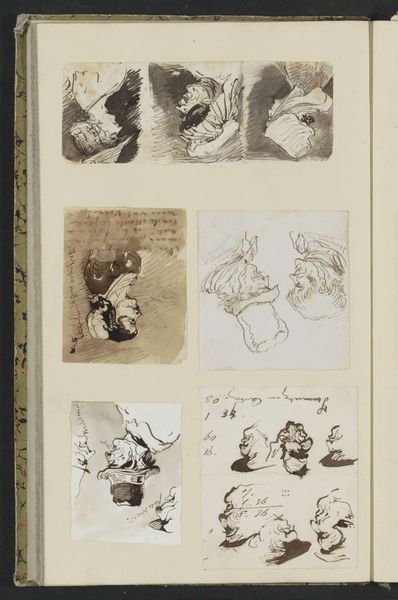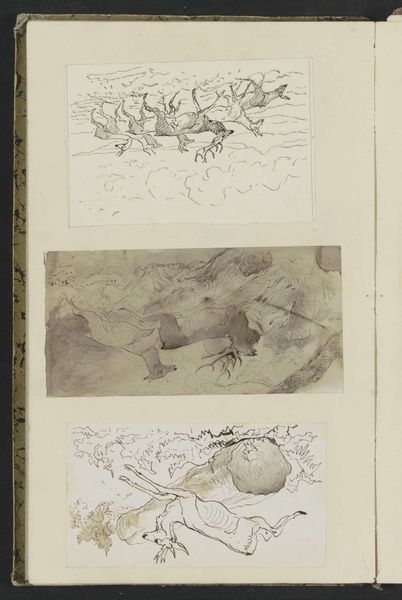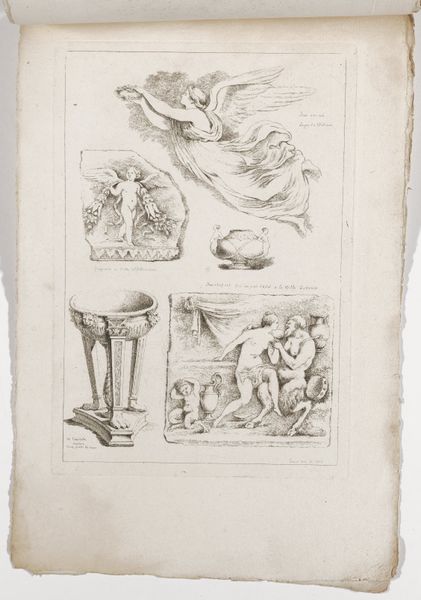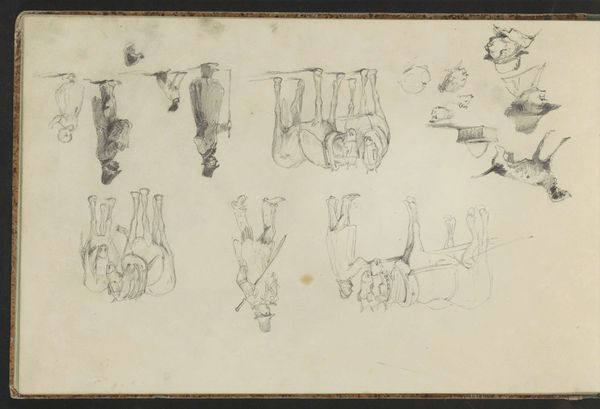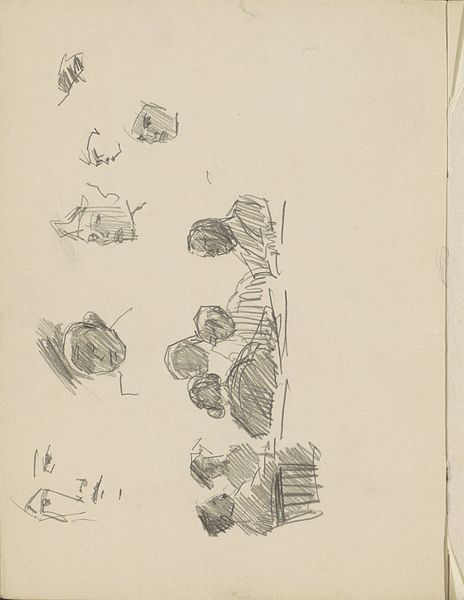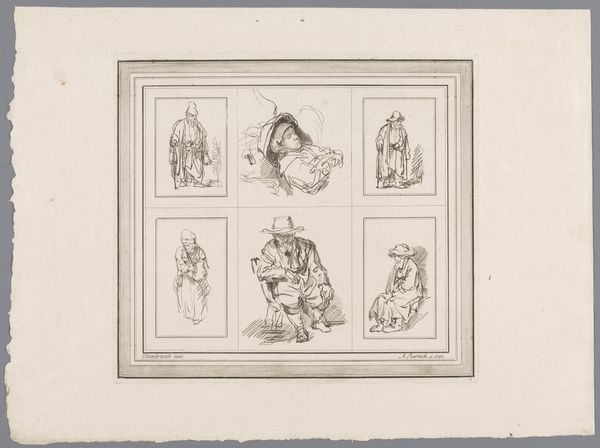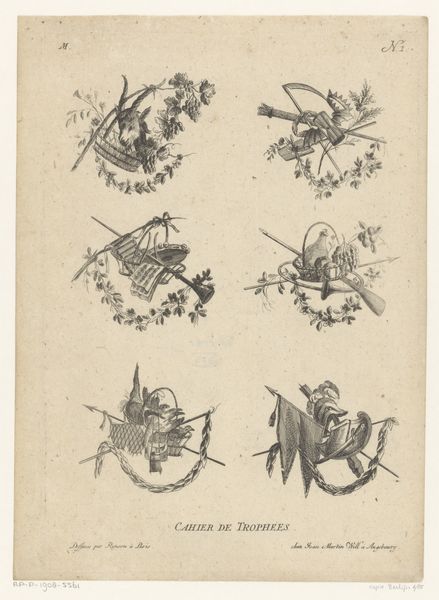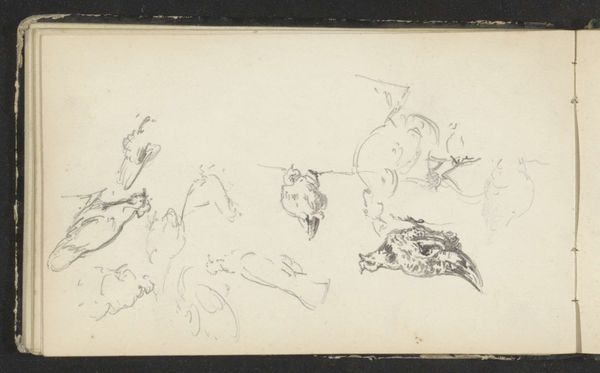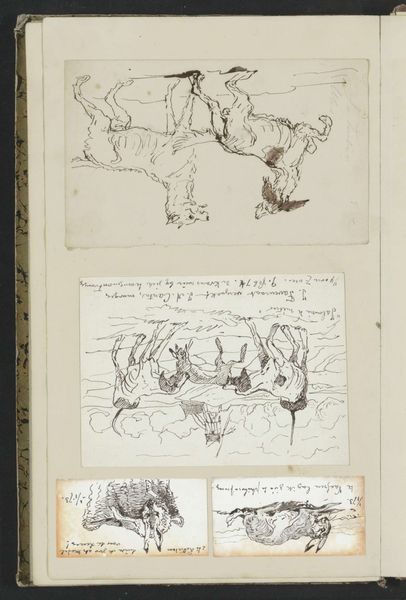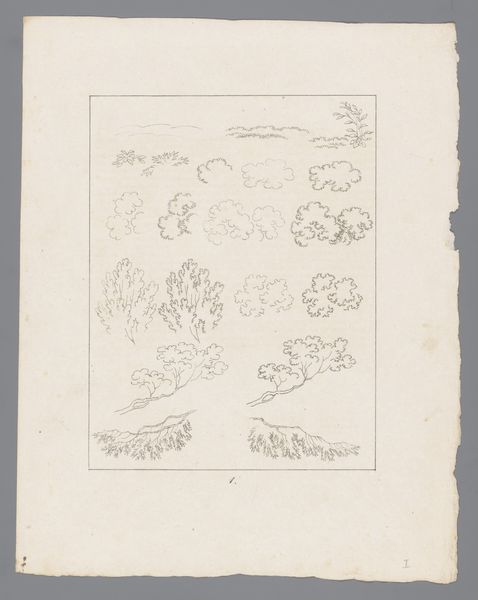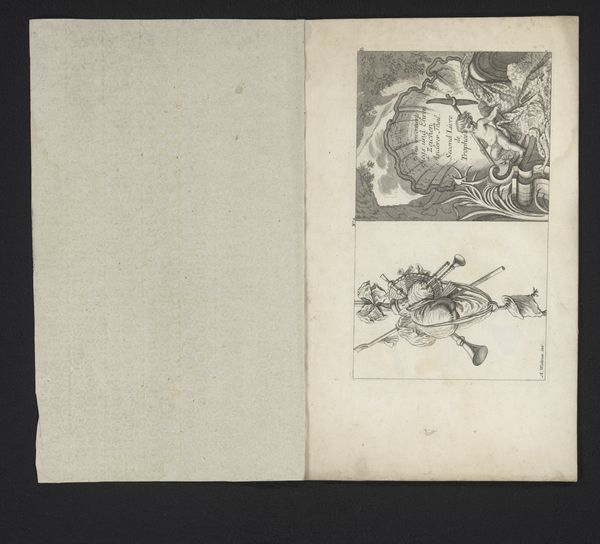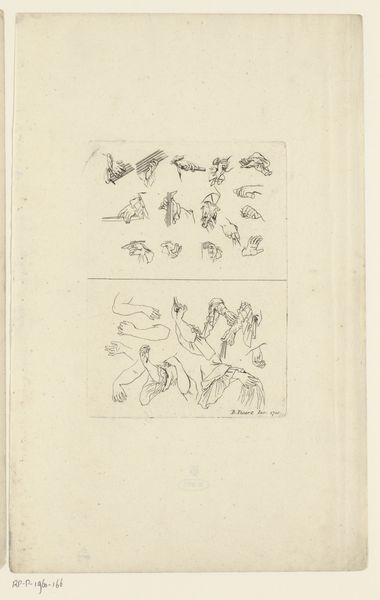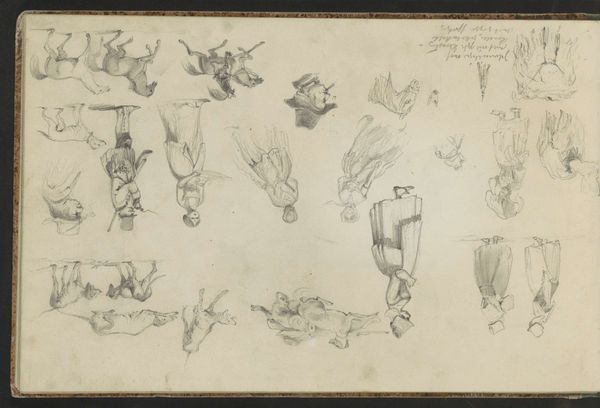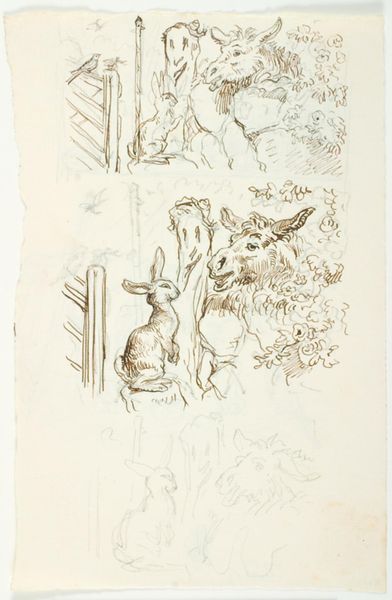
Copyright: Rijks Museum: Open Domain
Curator: Welcome. Before us we have "Karikaturale koppen," or "Caricature Heads," dating from 1871, created by Johannes Antonius Canta. It’s a collection of drawings in ink and watercolor on paper. What’s your immediate take? Editor: Whimsical, but also strangely grotesque. The scale shifts drastically; there's a clear emphasis on exaggerated facial features, and the ink strokes contribute a lively energy despite the somewhat aged paper. Curator: The paper itself is quite interesting, isn’t it? You can see the chain lines and watermarks if you look closely, indicating a specific mode of production and the inherent value of the paper as a commodity at that time. Editor: True. The monochromatic palette creates a certain kind of intensity; it’s not merely a study of form but rather an exploration into the nature of caricature. It really does delve into a philosophical commentary about physical appearance, don’t you think? Curator: I agree, and I think it's important to contextualize this within Canta's broader oeuvre. We see his engagement with genre-painting, social commentary, and, significantly, the burgeoning print culture of the late 19th century which relies on accessibility and cost-effective ways of making images available to a broader public. Editor: Look at the hat. Recurring in nearly every sketch, the chapeau morphs. Here it is a pedestal for preposterous expressions; here, a comical disguise. Fascinating to see how the hat isn't mere attire but integral to the visual gag. Curator: Exactly, the attire helps to frame these figures, suggesting character types familiar to his audience. Also consider, this sketchbook may well have been circulated among a circle of friends and associates—a social object intended to spark dialogue and debate. Editor: I find myself fixated on the quality of the lines. There’s such a clear expression despite the lack of rigid precision. Look at how lines swell or recede to describe volume or texture with mere graphic variation, all contributing to that air of contained madness you often see in Romantic-era works. Curator: That is interesting because to me, these rapidly drawn portraits underscore not just the artistry of Canta but also point to the cultural appetite for readily digestible and shareable imagery during this period. It's art becoming social currency. Editor: An idea so thoroughly modernized! Even then the interplay between high art and low humor or mass media seems already evident in embryonic form in works such as these quick studies of oddities and personality traits, a testament to the timeless nature of art's reflections. Curator: Indeed. And perhaps most resonant now when considering accessibility: in these caricatures, Canta’s craft transforms from skilled draftsman to documenter of collective visual fascination of a certain era. A mirror still relevantly warped.
Comments
No comments
Be the first to comment and join the conversation on the ultimate creative platform.
